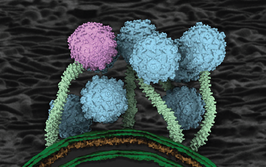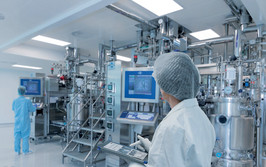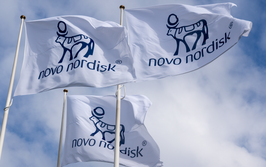How Can Industry Address AMR?
As world leaders commit to an ambitious reduction in AMR-related deaths, we ask is five years enough time to achieve it?

A BMJ article titled “World leaders commit to reduce deaths from antimicrobial resistance by 10% by 2030” (1) discusses the latest global commitment to combating antimicrobial resistance (AMR). During a high-level meeting at the UN General Assembly on September 26, world leaders addressed the AMR crisis by signing up to the implementation of ambitious targets, including a formal, united effort to reduce AMR-related human deaths by 10 percent by 2030.
With the Africa Centres for Disease Control and Prevention (Africa CDC) director general Jean Kaseya describing the ongoing mpox outbreak as “the major driver of antimicrobial resistance” on the continent, the question of whether these targets are a little too ambitious is a valid one. This is the second time the UN has held such a meeting, with the first in 2016. At this year’s iteration, WHO director general Tedros Adhanom Ghebreyesus emphasized – again – that AMR is among the most urgent health challenges. In his view, the commitment highlights a clearer understanding now of the need for coordinated efforts to mitigate the growing risks.
Recent responses from the pharmaceutical industry regarding AMR indicate an increasing engagement in addressing the issue. Some notable insights and developments include a commitment to antibiotic development, wherein the pharmaceutical industry continues to recognize the importance of new antibiotics to combat drug-resistant bacteria, and collaborations and partnerships such as the Cepheid's Initiative, in which Cepheid president Vitor Rocha calls for improved diagnostics over the dependency on antibiotics as a preventative measure. "Almost everyone who has visited a healthcare provider for an undiagnosed infection has taken antibiotics as a preventative measure at one time in our lives,” said Rocha. “Too often, we are given broad spectrum antibiotics for viral infections or allergic reactions instead of as a treatment for a bacterial infection. That's how antimicrobial resistance develops.”
A growing focus on sustainable practices such as controlling the release of antibiotics into the environment during production ranks high among the initiatives manufacturers can take against AMR. Because of the high costs and few financial incentives for developing new antibiotics, however, such commitments do not come without their challenges.
Government commitments are certainly an important and effective means of getting the ball rolling (US President Joe Biden has recently earmarked at least $500 million for the fight against mpox), but there is a growing anger – particularly among the US electorate – regarding the investment of public money overseas. Whether or not this chest makes it to Africa as Biden intends is likely to come down to the US Presidential election result in November.
If curtailing mpox first is the key, as observed by Kaseya, industrial scale challenges are best overcome through collaboration, and time. But 2030 – a little over 5 years hence – maybe time too little for a challenge as enduring as AMR.
- G Iacobucci, “World leaders commit to reduce deaths from antimicrobial resistance by 10% by 2030”, BMJ 386:q2122 (2024). DOI: 10.1136/bmj.q2122
Following a Bachelor’s degree in English Literature and a Master’s in Creative Writing, I entered the world of publishing as a proofreader, working my way up to editor. The career so far has taken me to some amazing places, and I’m excited to see where I can go with Texere and The Medicine Maker.



















